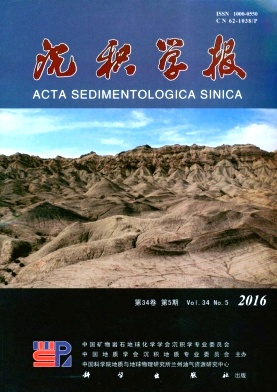Forming Mechanism of the Slope-confined Submarine Canyons in the Baiyun Sag, Pearl River Mouth Basin
doi: 10.14027/j.cnki.cjxb.2016.05.013
- Received Date: 2015-10-08
- Rev Recd Date: 2016-01-15
- Publish Date: 2016-10-10
-
Key words:
- slope-confined canyons /
- sediment supply /
- forming mechanism /
- Baiyun sag /
- Pearl River Mouth Basin
Abstract: The bathymetric map shows that there are 17 NNW-SSE trending submarine canyons in the northern slope of the Baiyun Sag in the Pearl River Mouth Basin, with the heads terminated on the slope, composing the slope-confined submarine canyons. Based on the high resolution 2D seismic profiles, the Quaternary sequence stratigraphic framework was established by external morphology, internal structure and other reflection characters. The depositional fillings can be divided into three systems tracts, including LST (lowstand systems tract, LST), TST (transgressive systems tract, TST) and HST (highstand systems tract, HST).The HST could be further divided into two sedimentary units, HST-I and HST-Ⅱ, according to the prograding styles of the slope, the vertical stacking patterns, the change of erosion features, and the continuity of high-amplitude seismic reflectors. The results illustrated that, the slope-confined submarine canyons were developed in the later HST sedimentary unit (HST-Ⅱ). Besides, some factors controlling the formation and development of canyons were also discussed, such as sediment supply, sedimentary failures, seafloor topographic features, and fluids leakage. Since Quaternary, abundant sediments from the Pearl River in the north would be transported via shelf to slope and basinfloor, supplying the sufficient sediments for slope-confined submarine canyons. Controlled by some negative paleo-topographic features formed in the earlier HST sedimentary unit (HST-I), during the northward transportation of these sediments, erosions and sedimentary failures were developed, inducing the formations of slope-confined submarine canyons. In the study area, the widely distributed gas chimneys, implied the vertical migrations and leakages of gas-bearing fluids, which might contribute to the evolution of submarine canyons.
| Citation: | LIU Jie, SU Ming, QIAO ShaoHua, SHA ZhiBin, WU NengYou, YANG Rui. Forming Mechanism of the Slope-confined Submarine Canyons in the Baiyun Sag, Pearl River Mouth Basin[J]. Acta Sedimentologica Sinica, 2016, 34(5): 940-950. doi: 10.14027/j.cnki.cjxb.2016.05.013 |






 DownLoad:
DownLoad: